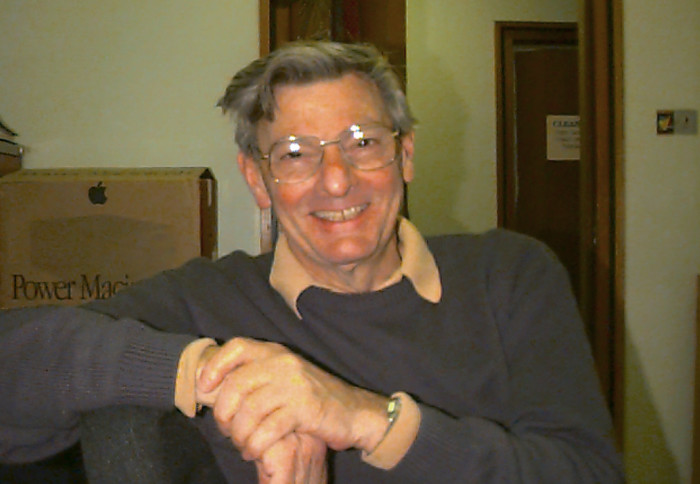It is with great sadness that we announce the death of our long-standing colleague and friend, Professor Mino Green.
Mino was Emeritus Professor of Electrical Device Science in the Department of Electrical and Electronic Engineering, Imperial College London, and a member of the Optical and Semiconductor Devices Group.
Mino was born in New York in 1927, and spent his early years in the USA, France and England, where he attended Dulwich College. He obtained a BSc in Chemistry at Durham University in 1948, and a PhD in Radiochemistry (also at Durham) in 1951. He was awarded a DSc in 1964. Following his PhD, and marriage in 1951 to his beloved wife Diana, he moved to MIT’s Lincoln Labs in Cambridge Massachusetts as a Group Leader. He then worked successively for Zenith Radio, Chicago, and the University of Pennsylvania, before creating and leading the UK Research centre for Zenith Radio at Stanmore. He then joined Imperial as a Fellow in 1972 and a Lecturer in 1973, rising to Reader in Electrical Materials in 1976 and then Professor and Head of the Optical and Semiconductor Devices Group in 1983. He became Senior Research Investigator on his retirement in 1992, but for almost 30 years continued to attend College, where he conducted numerous research projects despite being ‘retired’.
The interplay of chemistry and physics was the basis for much of his research work, which became increasing focused on nanotechnology. In America, he carried out ground-breaking studies of the surfaces of silicon and germanium and made the seminal investigation of the electrochemistry of the semiconductor-electrolyte interface. Subsequently, he contributed to the understanding of many solid-state effects, including electrical transport, thermoelectricity, and photoconductivity. At Imperial, he pioneered the development of electrochromic windows in tungsten bronze thin films, working with the British Technology Group and glass manufacturers to turn invention into products. He carried out early work on laser-assisted etching of semiconductors, and on electron-beam modification of glass for optical waveguide formation. He developed a new method of silica-on-silicon waveguide fabrication based on spin-coating and rapid thermal annealing of sol gel glass. His most recent work was in nanolithography, where he has developed methods for fabricating partially ordered nanostructures, using inorganic resists to form closely spaced arrays of nanopillars and nanowells. Nanopillars are now used as highly sensitive substrates for surface-enhanced Raman spectroscopy in proteomics. Nanowells form the basis of electrochemically shuttered nanoreactors for combinatorial drug discovery, and nanostructured silicon is being used for high-performance anodes in lithium batteries.
Mino had a long interest in the chemistry of electrical energy storage and had consulted for NASA on fuel cells. In 2006, he founded a spin out company, Nexeon, to develop nanostructured batteries with improved charge storage capacity. His key contribution was the recognition that damage to conventional planar electrodes caused by repetitive lithium-ion insertion and extraction could be mitigated by using a nanostructured material, with its much larger surface area. He was awarded the Imperial College Medal in 2015 for this work and was a Fellow of the Institute of Electrical Engineers.
Mino is survived by his son David and daughter Penny, and his four much-loved grandchildren.
Mino's friends, colleagues and former students are invited to share their own tributes and memories in the comments section below.
